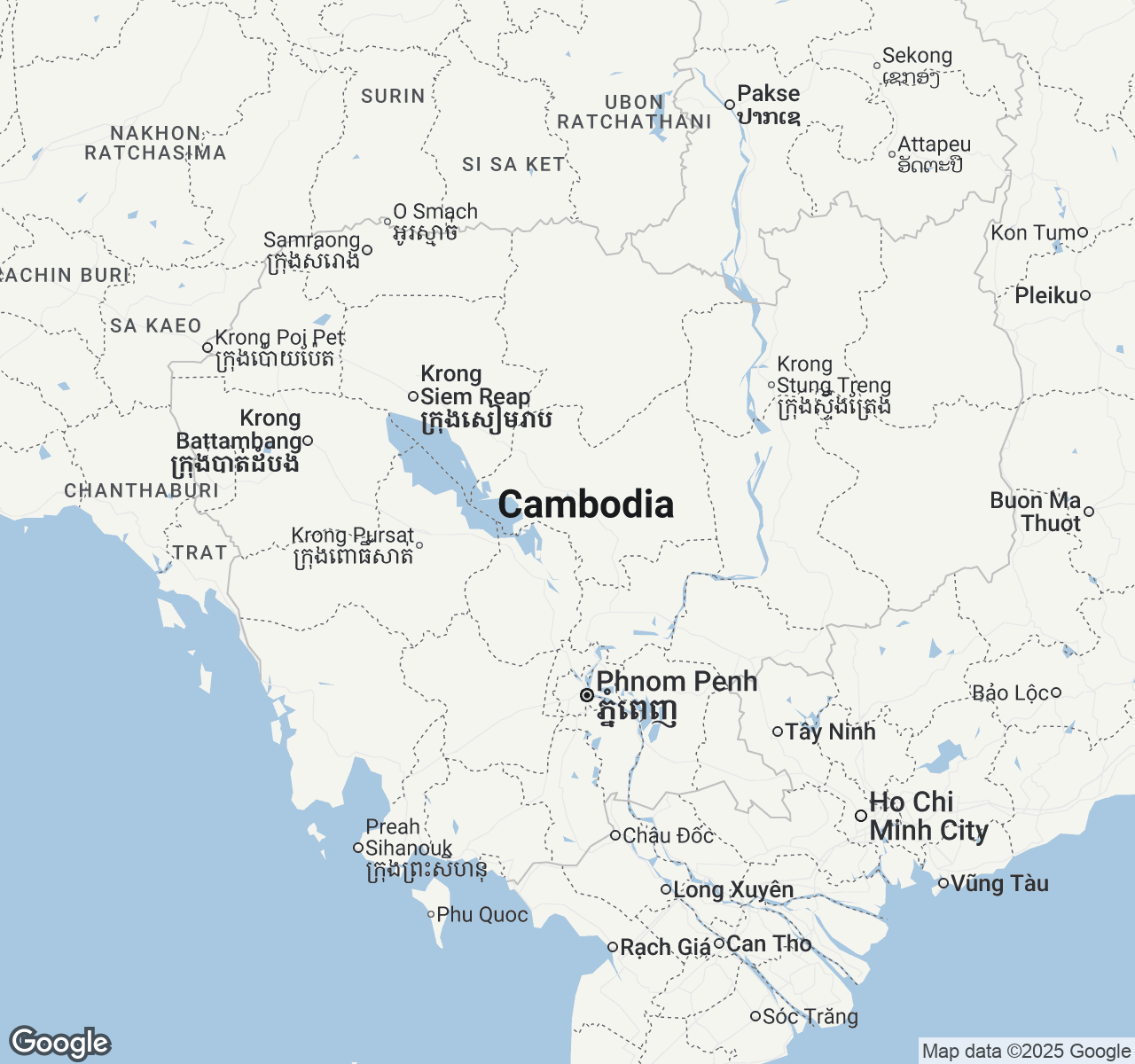
Things to Do in Cambodia
Discover the best of Cambodia
Plan Your Trip
Essential guides for timing and budgeting
Top Things to Do in Cambodia
Discover the best activities and experiences. Book now with our trusted partners and enjoy hassle-free adventures.
Your Guide to Cambodia
About Cambodia
Where golden spires pierce emerald canopies and the whispers of ancient Khmer kings echo through weathered sandstone corridors, Cambodia unfolds like a living tapestry woven from resilience and grace. This is a land where saffron-robed monks collect alms at dawn as the mighty Mekong carries stories downstream, where village children's laughter mingles with the haunting calls of hornbills in pristine jungles. Beyond the world-renowned majesty of Angkor Wat lies a country pulsing with quiet strength—floating villages that rise and fall with monsoon rhythms, bustling markets perfumed with lemongrass and star anise, and coastlines where fishing boats dance on sapphire waters. Cambodia invites you to slow down, to witness the extraordinary in everyday moments: a grandmother teaching ancient recipes, artisans breathing life into silk looms, or the simple magic of sunset painting temple stones in liquid gold. Here, every encounter becomes a bridge between past and present, every smile a testament to the enduring spirit of the Cambodian people.
Travel Tips
Transportation: Download PassApp for reliable tuk-tuk rides with fixed prices. For longer distances, book Mekong Express or Giant Ibis buses—avoid local buses. Rent motorbikes only if experienced; traffic is chaotic. Always negotiate taxi fares beforehand or use ride-sharing apps in Phnom Penh and Siem Reap.
Money: Cambodia uses both USD and Cambodian riel. Carry small USD bills ($1, $5, $10) as change comes in riel. ATMs dispense USD but charge high fees. Most places accept USD; riel is used for amounts under $1. Always have cash—card acceptance is limited.
Cultural Respect: Remove shoes before entering temples and homes. Dress modestly covering shoulders and knees at religious sites. Never point feet toward Buddha statues. Use both hands when giving or receiving items. Avoid public displays of affection. Photography inside temple buildings often requires permission.
Food Safety: Stick to busy street stalls with high turnover and avoid raw vegetables unless at upscale restaurants. Drink bottled or filtered water exclusively. Try amok (coconut curry), lok lak (beef stir-fry), and fresh spring rolls. Skip ice in drinks unless at established restaurants.
When to Visit
Cambodia's tropical climate creates distinct seasons that dramatically affect your experience. The cool, dry season (November-March) offers ideal conditions with temperatures of 68-86°F and minimal rainfall, making it peak season with accommodation prices 40-60% higher. December-February is perfect for temple exploration and outdoor activities, though expect crowds at Angkor Wat. The hot season (April-May) brings sweltering temperatures up to 104°F but fewer tourists and 30% lower prices—ideal for budget travelers who can handle the heat. The rainy season (June-October) transforms the landscape into lush greenery with dramatic afternoon downpours, temperatures of 77-95°F, and the lowest prices (50% off peak rates). September-October sees the heaviest rainfall, but mornings are often clear for sightseeing. Key festivals include Khmer New Year (April 13-15), Pchum Ben honoring ancestors (September-October), and Water Festival celebrating the Mekong's flow reversal (November). Adventure seekers should visit June-August when waterfalls are at their most spectacular. Photography enthusiasts will love the golden light and dramatic skies during rainy season, while temple purists should stick to the cool months for comfortable exploration without weather interruptions.

Cambodia location map